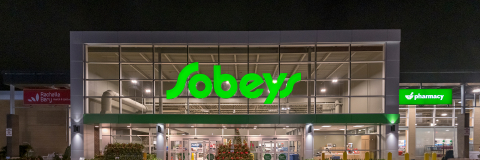Net-zero by 2040*
*for Scope 1 and 2 emissions, and net-zero for Scope 3 emissions by 2050.
Taking real steps to tackle the climate crisis is one of our most important goals as part of the broader Canadian and global community. The time for just talking about climate change is over—what’s needed now are firm targets and achievable plans that can lead to meaningful emissions cuts and decarbonization. We have a bold new plan to achieve net-zero by 2040 for our Scope 1 and 2 emissions and net-zero by 2050 for Scope 3 emissions. We have set interim goals to help us make progress and, as always, we will work closely with our supplier partners, teammates, customers and communities to ensure everyone is empowered to do their part and be part of the solution.
 Analyst Spotlight
Analyst Spotlight Our Approach
As identified in our most recent materiality assessment, addressing climate change is one of the top priorities for our stakeholders, and it has been included in our long-term goals and strategy. We listened to this feedback and have taken action to set emissions reduction targets as some of our most critical environmental, social and governance (ESG) goals this year. We also believe that setting climate targets helps us reduce exposure to carbon pricing and any pending mandates on emissions reductions.
Our new Climate Action Plan is aimed at meaningfully reducing our direct and indirect greenhouse gas (GHG) emissions and beginning our transition towards decarbonizing our business and value chain. Our Plan is built around science-based targets (SBTs) that meet the requirements of the Paris Agreement.
Our Targets |
Net-Zero Targets:
|
Near-term Targets:
|
Aligning Our Targets to the Science-Based Targets Initiative
We are pursuing validation of our climate targets through the Science Based Targets initiative (SBTi), an internationally recognized body that provides standards and guidance for organizations to set targets aligned with the latest climate science. As of June 2022, over 3,000 organizations across multiple sectors around the world have committed to setting science-based targets. Consistent with SBTi requirements, we have set a near-term target to achieve by 2030.
Here’s how our near-term targets align with SBTi requirements:
Scope 1 and 2 GHG Emissions Reduction Target:
- Near-term by 2030 (baseline 2019)
- Absolute emissions reduction
- Calculated using SBTi’s absolute contraction approach, which means an equal annual rate of absolute emissions reduction
- Includes all Sobeys Inc. Scope 1 and 2 emission sources1
Scope 3 GHG Emissions Reduction Target:
- Covers two-thirds of total Scope 3 emissions
- For Purchased Goods and Services: Calculated using SBTi’s supplier engagement-based target approach; Near-term by 2027 (baseline 2019)
- For Use of Sold Products: Scope 3 emissions from fuel sold aligned to a “well below 2°C” trajectory; Near-term by 2030 (baseline 2019)
- Includes all material Empire and Sobeys Inc. Scope 3 emission sources
Empire & Sobeys Inc. Greenhouse Gas Emissions
Emissions summary (tonnes CO2e) 1
| Scope | 2021 | 2020 | 2019 | % difference (2021-2019) | |||||||
|---|---|---|---|---|---|---|---|---|---|---|---|
| Scope 1 2,3 | 411,362 | 499,679 | 427,074 | -3.7% | |||||||
|
|||||||||||
| Scope 2 4 | 262,956 | 277,014 | 357,030 | -26.3% | |||||||
|
|||||||||||
| Scope 3 5 | 25,782,665 | 25,023,023 | 23,369,415 | 10.3% | |||||||
|
|||||||||||
| Total | 26,456,983 | 25,799,716 | 24,153,519 | 9.5% | |||||||
|
|||||||||||
| Scope 1 & 2 intensity (kg CO2e/sq ft) | 28.38 | 31.82 | 33.99 | -16.5% | |||||||
|
|||||||||||
Please Note:
- 2019-2021 GHG inventory includes all Sobeys Inc and Empire grocery and related business banners in operation in 2019, including corporate and franchise sites.
- Scope 1 emissions sources encompass natural gas, propane and fuel oil used for heating and operations in our stores, retail support centres and offices, as well as refrigerant emissions, fuel from corporate and Voilà fleet, and diesel in onsite generators.
- Scope 1 emissions from refrigerant leakage includes our corporate grocery sites where maintenance service providers are integrated with our maintenance tracking and data management system. We will be enhancing our data collection processes over the next year as we continue to work with our service providers to expand coverage of this emissions source.
- Scope 2 emissions source encompasses electricity consumption.
- Scope 3 emissions sources encompass purchased goods & services, capital goods, fuel and energy related activities (not included in Scope 1 or 2), upstream transportation and distribution, waste generated in operations, business travel, employee commuting, use of sold products, and franchises.
Our Strategy to Achieving our Scope 1 and 2 Emissions Reduction Target and Decarbonizing our Business
Based on our emissions profile, we have developed a framework for prioritizing Scope 1 and 2 emissions reduction initiatives (or carbon abatement projects). Abatement projects were initially selected based on proven approaches to reducing emissions in key areas of our business (e.g. energy efficiency). We then filtered the list of potential projects to focus on those with the greatest GHG reduction potential and those that were most practical for our business to pursue.
Our strategy is to prioritize existing and new carbon abatement projects occurring at our corporate sites and through our owned fleet that enable us to REDUCE and REPLACE emissions to low carbon sources as much as possible. To this end, we aim to expand on existing projects and accelerate piloting new projects during Phase 1 (fiscal 2024–2026). In the years following Phase 1, we will focus on scaling up successful pilots. Finally, we will MOBILIZE a Renewable Energy Strategy in targeted provinces.
Framework for Scope 1 and 2 Emissions Abatement Projects
Climate Action Plan: Phase 1
During Phase 1 of our plan, from fiscal 2024 to fiscal 2026, we will be working to achieve our 2030 GHG target by focusing on areas that are most critical to our emissions output.
Real Estate
Aim to reduce and replace Scope 1 and 2 emissions by 2030 through projects to decarbonize our corporate stores, offices and warehouses. To achieve this, we will build on our Energy Efficiency Initiative, which was initiated in 2019 to reduce energy consumption at our sites. We will prioritize energy efficiency projects and transition to refrigerants with low or no global warming potential (GWP) for all new stores and renovation projects beginning in fiscal 2024. We also aim to develop and mobilize a portfolio of renewable energy projects to establish leadership in the Canadian marketplace.
Supply Chain & Logistics
Aim to reduce and replace Scope 1 emissions by 2030 through fleet-related projects. To achieve this, we will be implementing projects to decarbonize our owned fleet, such as switching to biodiesel and electric vehicles (EVs) over the next 10+ years.
Sourcing & Merchandising
Aim for a minimum of 62 per cent of suppliers, by spend, setting science-based targets on their Scope 1 and 2 emissions within five years (by the end of calendar year 2027). To achieve this, our engagement strategy for suppliers will primarily focus on collaborating with our supply chain partners and providing them with resources and reporting tools to make it easier for them to set a GHG reduction target.
Looking ahead, our next steps in implementing our Climate Action Plan include validating our near-term targets and our net-zero targets. We will also continue to improve our GHG inventory. For a company of our size and complexity, gathering complete and accurate data in a timely way can be challenging, which is why we are putting in place systems and processes to ensure coordinated tracking and reporting.
We also recognize that meeting our Scope 3-related targets means working closely with our supplier partners and other external organizations to help them align and integrate with our plan. Not everyone is at the same place in their emissions-reduction journey, which is why we are taking a thoughtful and supportive approach to make progress towards greater consistency and collaboration. This includes surveying our supplier partners to understand where they are today in their respective climate action journeys, clearly communicating our targets and plan, and working collaboratively to build capacity and shared understanding. We will share relevant information, knowledge and best practices with our supplier partners through a combination of online tools and in-person events and conversations. We will also build a robust reporting and reinforcement process aligned with CDP’s supply chain program.
Climate Risks & Opportunities
Climate change may pose adverse impacts to our business, including to our stores, offices and warehouses, and to our supply chain. We are working to identify and manage climate-related impacts in alignment with the recommendations of the Task Force on Climate-Related Financial Disclosures (TCFD). Conducting an assessment according to the TCFD recommendations will enable us to better understand our material climate-related risks and integrate them into our Enterprise Risk Management approach and financial planning process. As part of this work, we will leverage third-party experts to identify potential acute and chronic climate-related risks and assess their business impacts against different climate scenarios and future time horizons. We will also aim to identify potential opportunities, including resource efficiency and improved resilience in the transition to a low-carbon economy. As we have committed to science-based reduction targets in 2022, following the TCFD recommendations will also improve our governance, measurement and tracking of our targets.

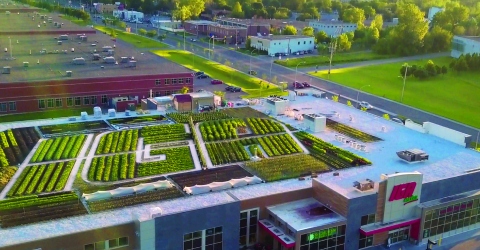
Highlights
Expanding Use of Rooftop Solar
Longo’s is committed to working with building partners to ensure that all new stores and major renovations incorporate efficient technologies and features to ensure sustainable operations. To date, Longo’s has installed solar panels at eight stores and at the team’s Support Centre, turning under-utilized rooftops into clean energy-generating stations. In 2021, Longo’s generated 1,836,506 kWh of solar energy—enough energy to power 157 homes for a year.*
*Calculated using the US EPA GHG equivalency calculator
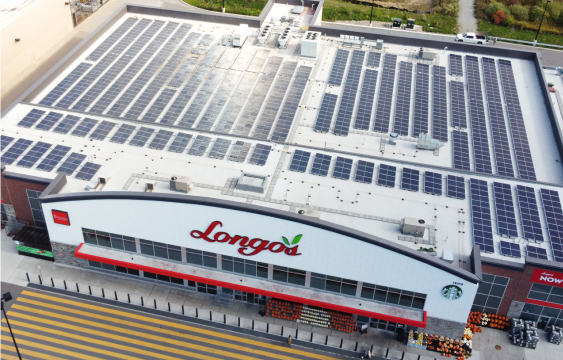
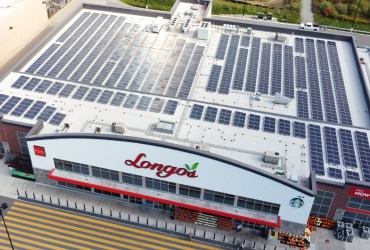
Climate Action in our Communities
We donate to the international charity One Tree Planted, which uses that funding to offset carbon in the atmosphere by planting trees. With our support, the group has planted over 14,000 trees in Nova Scotia, reforesting more than 27 acres of former agriculture land with local tree species carefully chosen with biodiversity, climate stability and the surrounding community in mind. Our partnership with One Tree Planted continues in Nova Scotia, British Columbia, Ontario and Québec.
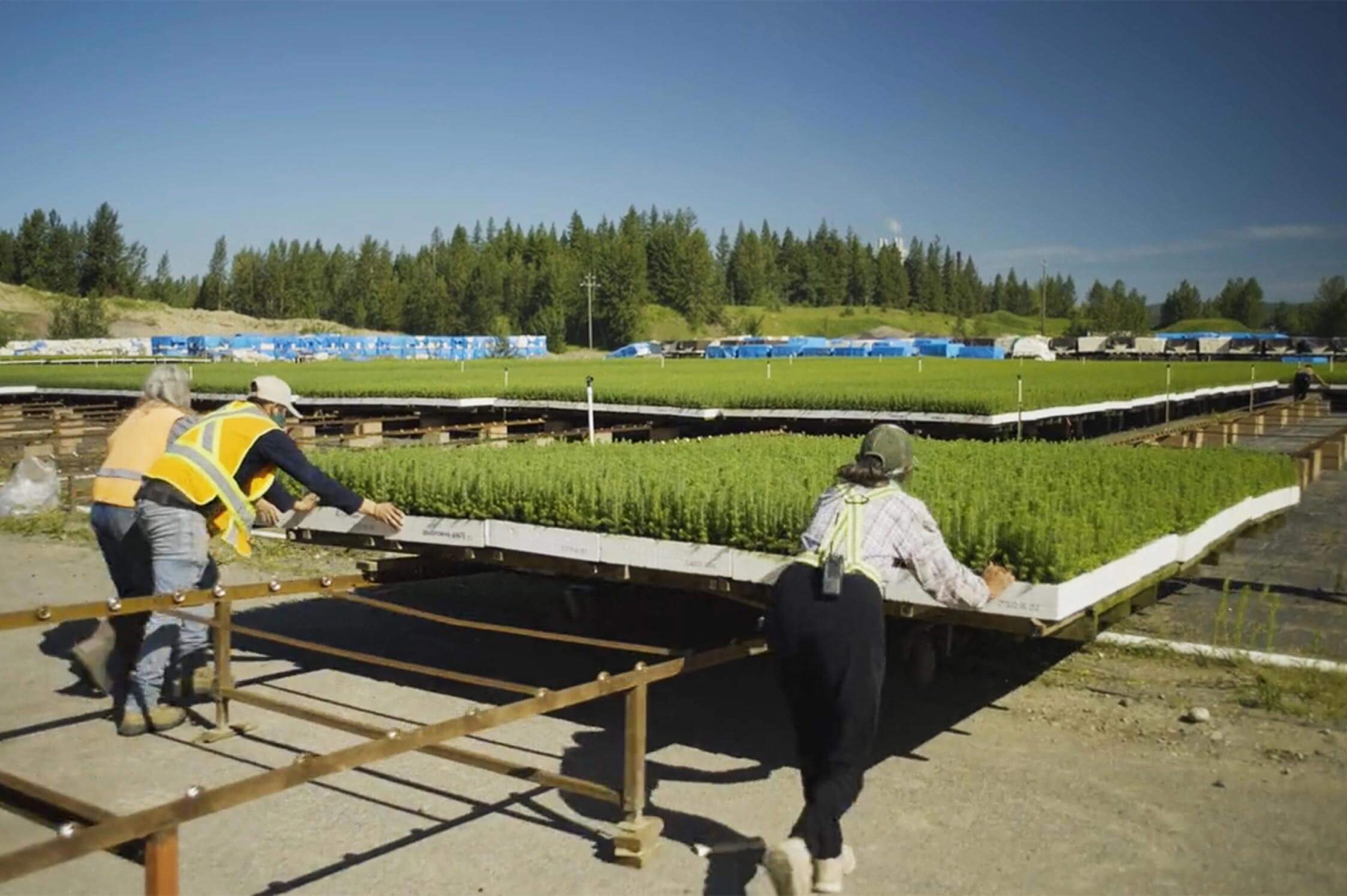
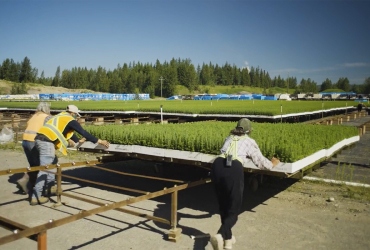
Champions
I am proud to lead a team of passionate professionals who deliver the best products to customers while driving real changes to the way we build and operate to reduce our carbon footprint. Some changes have been more challenging than others but everything counts. In the end, we can leave a better world for the next generation.”
Eric Perreault, VP Design, Maintenance & Building Standards, Sobeys Inc.


Learn More
Our work to tackle climate change includes our focus on energy management and environmental management
As a family nurturing families, we want to ensure Canadians are taken care of today, tomorrow and in the future. By doing OurPart™ for the environment, we hope to inspire our customers to do theirs. Every step we take together—big or small—can make a difference.
Learn More
